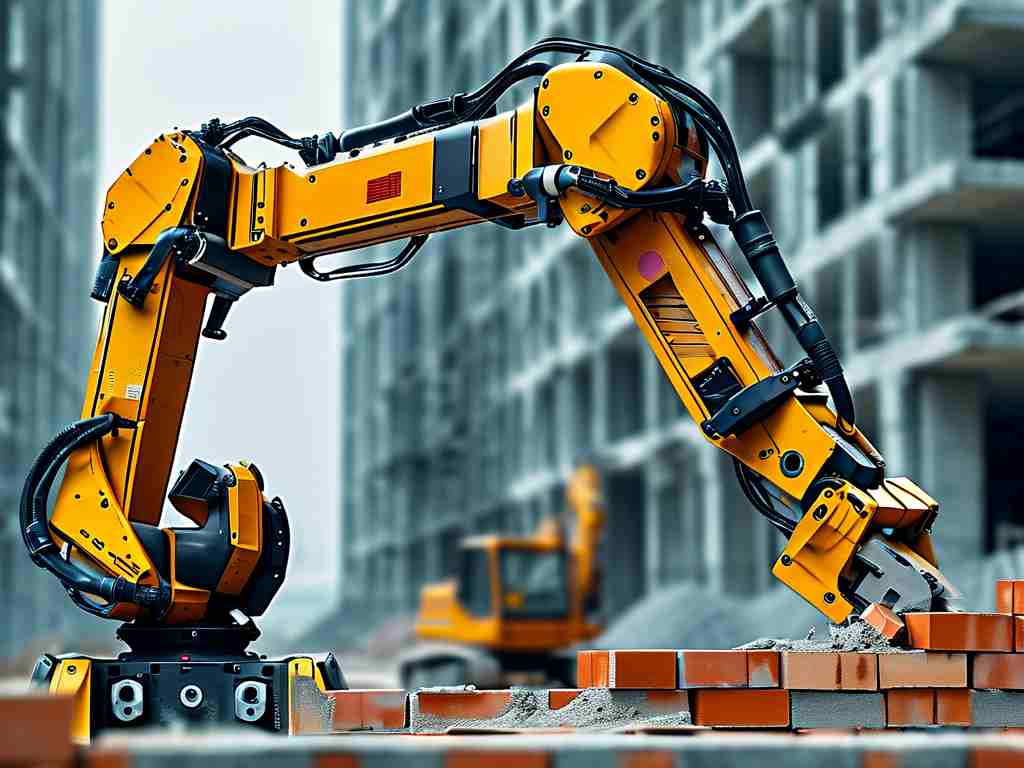The construction industry is witnessing a paradigm shift with the integration of robotic bricklaying systems, which combine precision engineering with advanced algorithms to redefine traditional masonry workflows. At its core, this technology leverages three fundamental components: computer-aided design (CAD) integration, robotic manipulators, and real-time material feedback systems.

Modern robotic bricklayers begin by processing architectural blueprints through specialized CAD software. Unlike conventional methods requiring manual measurement transfers, these systems automatically convert 3D models into executable laying patterns. For instance, the SAM100 (Semi-Automated Mason) developed by Construction Robotics employs laser-guided positioning to map wall structures within ±1.6mm accuracy. This digital-to-physical translation eliminates human measurement errors while enabling complex geometric designs previously deemed impractical for brick construction.
The robotic arm constitutes the system's physical executor. Equipped with multi-axis articulation, these arms mimic human wrist movements with enhanced repeatability. A typical setup uses vacuum grippers or specialized clamps to handle various brick types—from standard clay units to custom-shaped architectural blocks. The MULE (Material Unit Lift Enhancer) prototype demonstrates this adaptability, capable of switching between mortar application and brick placement through modular end-effectors. Such flexibility allows continuous operation across different construction phases without hardware reconfiguration.
Material feedback mechanisms address on-site variability. Integrated LiDAR sensors scan each brick before placement, detecting irregularities in dimensions or surface texture. This data feeds into adaptive control algorithms that compensate for material inconsistencies. During a 2023 field test by Fastbrick Robotics, their Hadrian X system adjusted mortar thickness in real-time when encountering warped bricks, maintaining structural integrity while reducing material waste by 18% compared to manual methods.
The operational workflow follows a cyclic pattern:
- Brick pickup from palletized inventory
- Mortar deposition via precision nozzle
- Spatial alignment using inertial measurement units
- Force-controlled placement
- Post-placement quality scan
This sequence occurs in 20-45 second intervals per brick, depending on system configuration. While slower than human teams in single-unit speed, robotic systems achieve net productivity gains through 24/7 operation and simultaneous multi-wall construction.
Current implementations face two primary challenges: mortar curing management and dynamic environment adaptation. To address the former, researchers at ETH Zurich developed a variable-rate mortar extruder that adjusts chemical composition based on ambient temperature and humidity readings. For environmental adaptability, Boston Dynamics' Spot robot has been trialed as a mobile base for bricklaying arms, enabling navigation across unfinished construction sites with sub-5cm terrain variance.
Economic analyses reveal compelling ROI metrics. A 2024 case study on a 50-home subdivision showed robotic crews completing structural walls 37% faster than traditional teams, with labor cost reductions offsetting initial equipment investments within 14 months. However, the technology currently focuses on load-bearing walls, with finish-quality brickwork still requiring human masons for detailed pointing and aesthetic adjustments.
Looking ahead, the convergence of robotic bricklaying with AI-powered defect detection promises to close this quality gap. Machine vision systems trained on terabyte-scale masonry databases can now identify sub-millimeter mortar joint inconsistencies, enabling self-correcting placement strategies. When paired with IoT-enabled mortar mixers that auto-calibrate material viscosity, the stage is set for fully autonomous masonry ecosystems.
As regulatory bodies begin drafting standards for robotic construction—such as the EU's forthcoming EN 1090-7 certification—the industry stands at the threshold of a new era where bricklaying robots transition from novel assistants to essential collaborators, reshaping skylines with unprecedented speed and geometric complexity.

